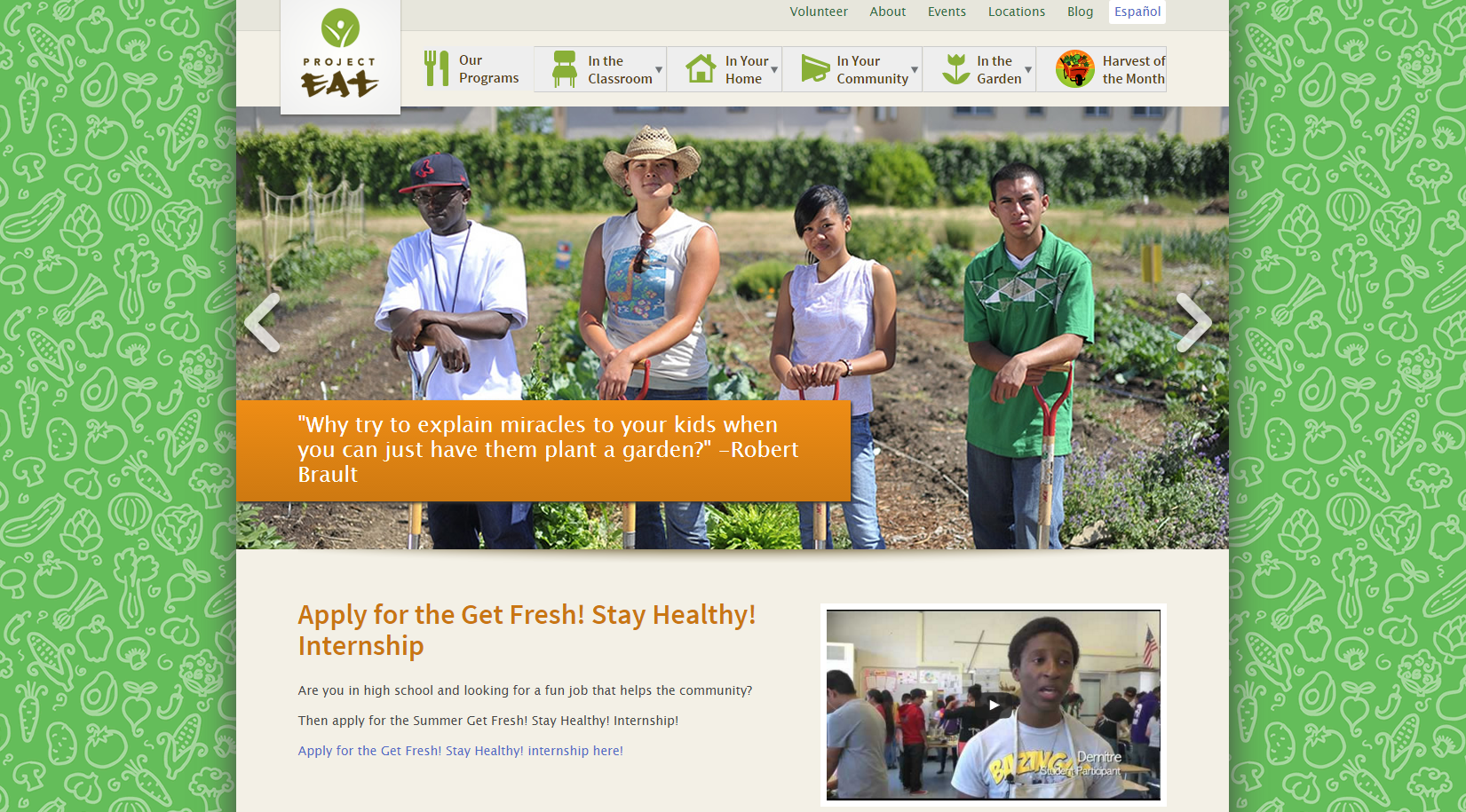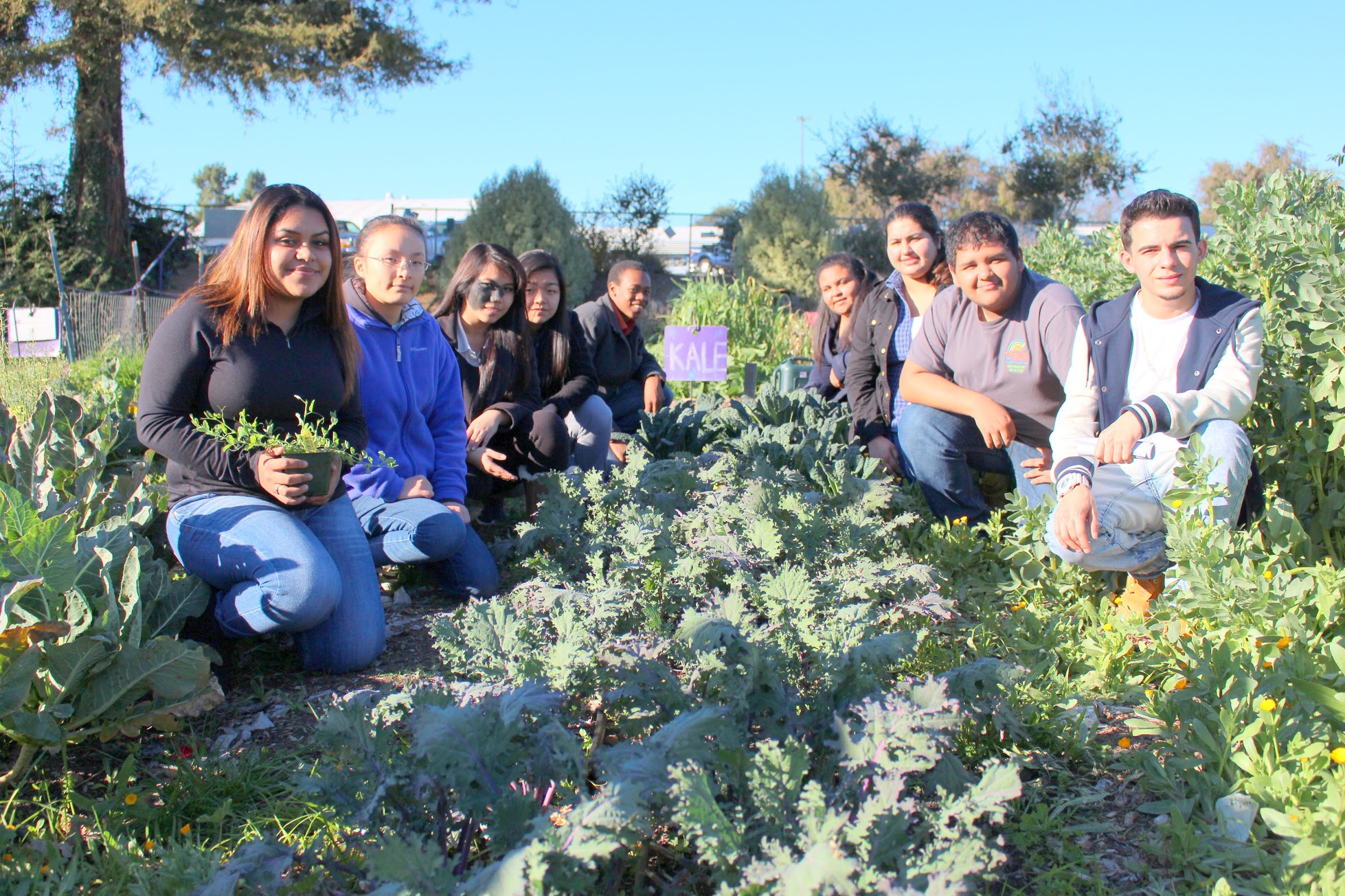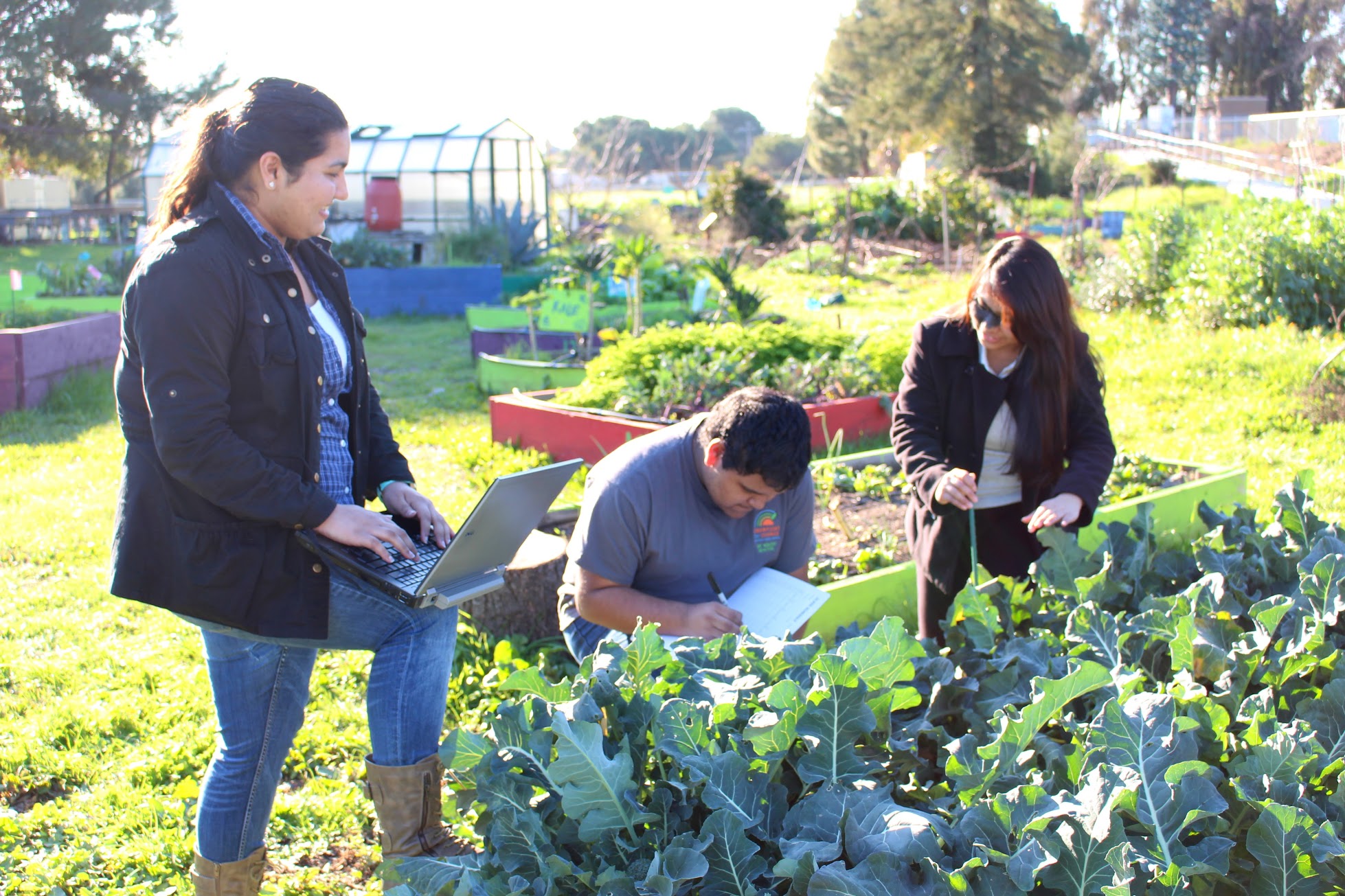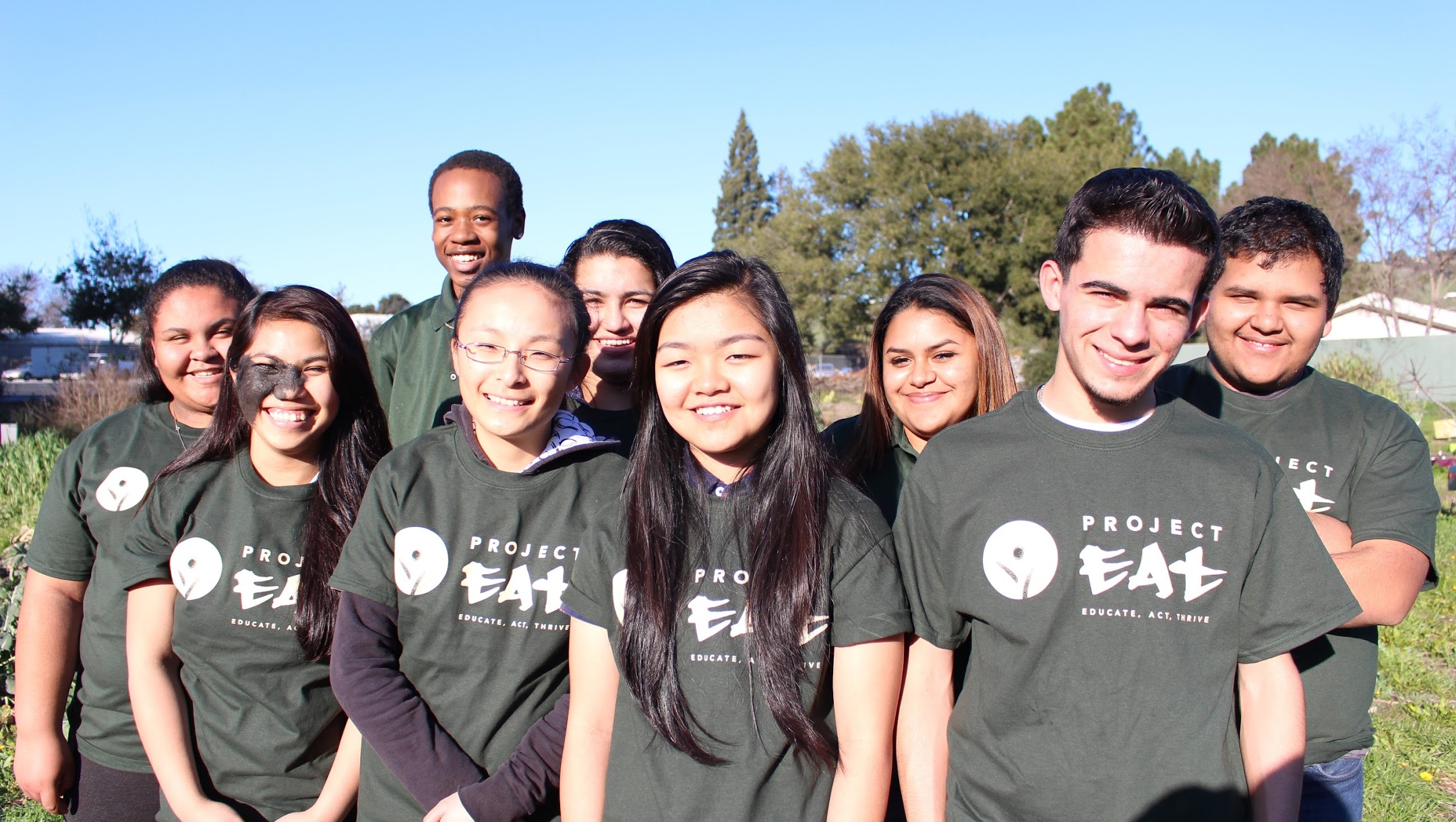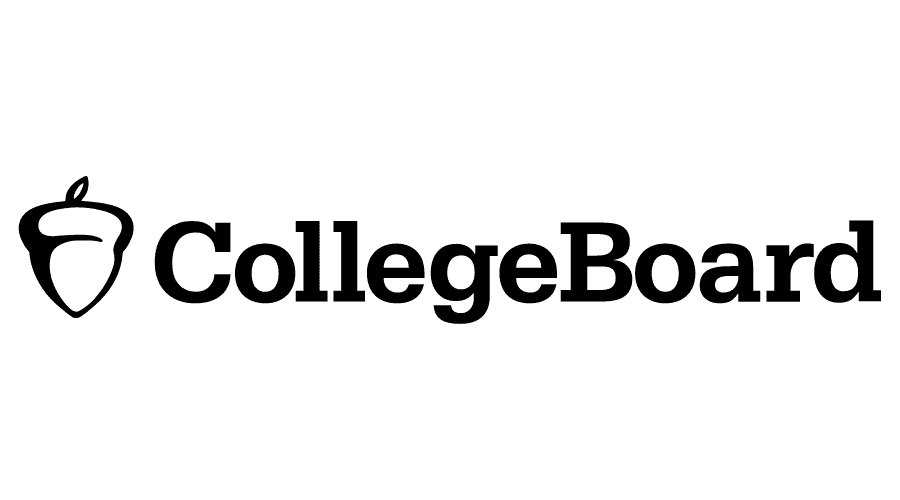Project EAT
Alameda County Office of Education
The Alameda County Office of Education’s Project EAT provides a host of programs that support youth development and community health goals. Project EAT, which began in Hayward, CA in 2001 and moved to Alameda COE in 2006, currently serves 19,000 students and 33,000 parents throughout 32 schools in Oakland, Hayward, Livermore, San Leandro and San Lorenzo.
Its programs include: youth leadership and career pathway development; direct service to students and families on nutrition education and exercise; and support to teachers on nutrition-based lesson plans.
Project EAT Youth Development
A core goal of Project EAT’s work is to empower youth to make healthy choices and gain leadership experience to change their communities. This work has included efforts both inside and outside the classroom through a host of skill-building and leadership development activities.
One area of development utilizes Youth Participatory Action Research (YPAR) to train students on how to conduct community research, collect and analyze data and form an action plan for change.
At Tennyson High School in Hayward, Project EAT students used the YPAR model to resolve the problem of their fellow students’ reluctance to drink the warm, funny-tasting water in school drinking fountains. They asked their peers for suggestions for an alternative to unhealthy soda machines and wasteful plastic water bottles. After conducting their research, Project EAT students shared their data with the School Site Council, which decided to install a hydration system. Tennyson High School students are now able to bring their own water bottles and refill them with filtered water. Tennyson’s school plumber who installed the hydration system liked it so much that he helped find the money to install them in every school in Hayward Unified School District.
Another aspect of student leadership development takes place in Project EAT’s popular garden mentor program where high school students are taught to plant gardens and to serve as mentors for elementary students. The student mentors, or “proFRESHionals,” learn how to help younger students create and sustain their own school gardens.
Project EAT Career Pathways
Approximately three years ago, Project EAT began to build on its early success with youth internship opportunities to create new garden and food career pathway opportunities. In response to inquiries from Project EAT participants about how to extend their experience beyond high school, Executive Director Christine Boynton took the opportunity to engage in a learning moment. She worked with a team of students to create a research question and investigate career pathway possibilities connected to healthy food and gardens.
Boynton and Project EAT staff took students to visit career pathway programs in Chicago, Brooklyn and Philadelphia. A team of students conducted stakeholder interviews of both staff and students to find out what was working in the three cities they visited. “We pulled together the research the students gathered and analyzed the data,” Boynton said. “Then we developed strategies and plans around the data.”
Boynton sees the shift as part of a broader vision to support students transition to college and careers. “This is how we’re moving into creating career pathways for young people, using the school garden mentorship program as a bridge to further opportunities in the food production pipeline.”
Resulting plans gave rise to new ventures that connect the student-run gardens with local farmers markets and restaurants, selling the fruits and vegetables grown to restaurateurs, and exposing Project EAT participants to the broader farm-to-table movement in the Bay Area. So far, food grown by the interns at high school gardens has been featured several times on the dinner menu at Cannery Café in Hayward.
Another resulting plan is a collaboration with Hayward Adult School where high school students create value-added products, such as jam and pickles from their garden crops to be sold at local farmers markets.
Teacher Training & Community Engagement
In addition to its youth development and career pathways work, Project EAT also trains teachers to provide lessons around school gardens that focus on growing, cooking and eating healthy food. Their “Harvest of the Month” project offers interactive, experiential lesson plans that highlight a different produce item each month for K-6 students. For example, middle school students can explore life in the Middle East and the birth of Islam through a history lesson that features recipes that can be prepared in the classroom.
Project EAT also extends the reach of its nutrition and physical education efforts to include community gardens and classes for families. “We have a wicked problem with poverty in this area. Work done by the Alameda County Public Health Department shows that your neighborhood makes a difference in your life span,” stated Boynton. “If we implement nutrition education in a rigorous, academic manner, we can improve knowledge, change behavior and close the achievement gap.”
Workshops and events are provided year round that provide physical activity, nutrition education and cooking classes.


